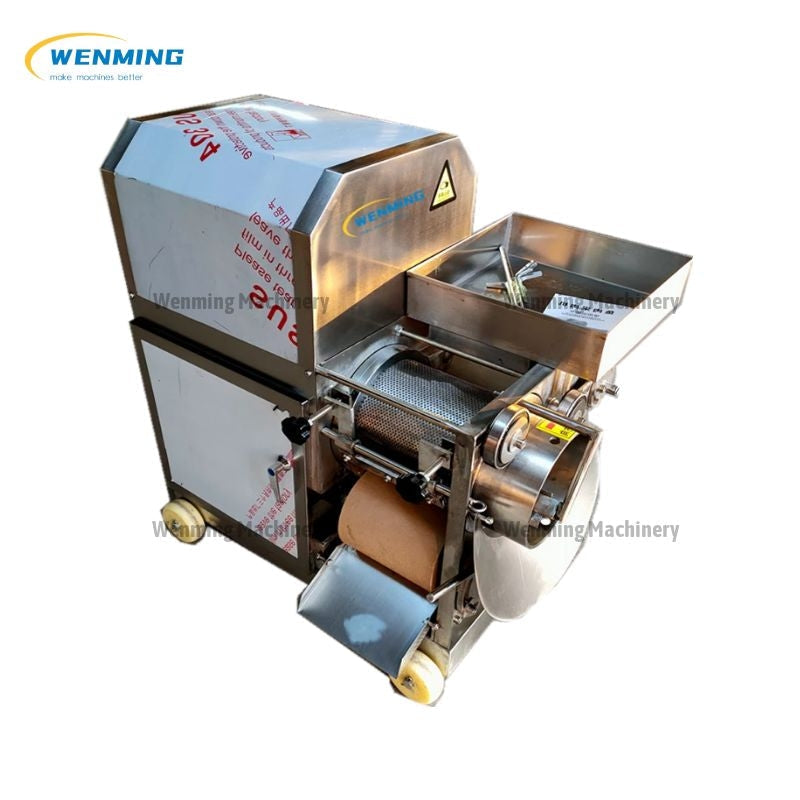10 years of experience as a food machinery equipment manufacturer
10 years of experience as a food machinery equipment manufacturer
The global demand for seafood continues to rise, placing significant pressure on the processing sector to enhance efficiency, maximize yield, and maintain high product quality. Traditional methods of fish preparation, particularly deboning and meat recovery, are often labor-intensive, time-consuming, and can lead to considerable wastage. In response to these challenges, the development and adoption of automated processing equipment have become crucial. Among these technological advancements, fish meat separators play a pivotal role in optimizing the utilization of aquatic resources.

The term “Portuguese fish meat separator” refers to a category of specialized machinery, often reflecting the engineering prowess and deep understanding of seafood processing inherent in a nation with a rich maritime heritage. These separators are designed to efficiently and hygienically extract fish meat from bones, skin, and fins after initial processing steps like heading, gutting, and sometimes filleting. While sharing core functionalities with other types of fish meat separators, models associated with Portuguese design or manufacturing often emphasize robustness, precision, and adaptability, catering to a diverse range of fish species commonly found in Atlantic waters and beyond. The focus is typically on maximizing the recovery of high-quality fish flesh while minimizing damage to its texture and nutritional properties.
Portuguese fish meat separators, like their counterparts, generally operate on the principle of mechanical separation. Fish, either whole (after heading and gutting) or pre-cut pieces, is fed into the machine. A common mechanism involves a flexible belt pressing the fish against a perforated drum. The soft fish meat is extruded through the small holes of the drum, while bones, skin, and fins, being harder and larger, remain on the outside and are discharged separately. The specific design nuances can vary, but several key characteristics are often highlighted:
The integration of efficient fish meat separators, such as those embodying Portuguese engineering principles, offers a multitude of benefits to seafood processing businesses:
Portuguese fish meat separators, and similar advanced machinery, find applications across various segments of the seafood industry. Large-scale processing plants that handle tons of fish daily rely on such equipment to maintain efficiency and competitiveness. Small to medium-sized enterprises also benefit by being able to process by-products more effectively, turning potential waste into revenue streams. The technology is crucial for producers of surimi and surimi-based products, where the quality and functionality of the minced fish are paramount. Furthermore, the ability to process previously underutilized or difficult-to-process species can contribute to more sustainable fishing practices by making better use of the entire catch.
When considering the adoption of a fish meat separator, businesses should evaluate several factors. The required processing capacity, the types and conditions of fish to be processed, and the desired quality of the end product are primary considerations. Ease of operation, maintenance requirements, and the availability of technical support are also important. Integration with existing processing lines and compliance with local food safety and labor regulations must be thoroughly assessed. A careful evaluation of these aspects ensures that the chosen equipment aligns with the processor’s specific operational needs and strategic goals.
The field of fish meat separation is continually evolving, driven by the need for greater efficiency, higher quality, and improved sustainability. Innovations focus on even gentler handling techniques, more precise separation to further reduce bone content, enhanced sensor technology for quality control, and designs that consume less energy and water. Regions with strong traditions in both fishing and engineering, such as Portugal, are likely to remain at the forefront of these developments, contributing to a global seafood industry that is more productive, responsible, and capable of meeting the nutritional needs of a growing population. The ongoing refinement of fish meat separators underscores the industry’s commitment to maximizing value from precious marine resources.
